“Every village along River Debed has a church, a monastery, few old ruins or spattering of khachkars,” my driver tells me at the start of the journey in Vanadzor. “You will be surprised.” Our communication is limited to Google Translator, but questions are asked and answered promptly, except when we hit no-connectivity zones.
The road through Debed canyon is busy – as it connects Armenia to Georgia and packs in more history and culture than anywhere else in the country. We ease past the town and stop under a bridge to catch the best views of the canyon. The river, brimming with last night’s rain, gushes its way past us and disappears around the bend. A thin mist clings to the canyon but cannot hide its beauty.
Somewhere beyond that mist is my destination of the day. We drive on. I am undertaking this journey because of a recent interest in Armenia’s UNESCO World Heritage sites and abandoned monasteries which are among the oldest in the world.
Monastery in the mountains
Soon, my driver stops beside the railway track and points at a non-existent trail he assures me will lead to the ruins of Kobayr Monastery ‘a hundred meters’ up the wall of the gorge. I cannot say what prompted me to undertake this vertical hike, but I began enthusiastically. From afar, the ruins of this medieval 12th century monastery perched on a precarious slope had looked alluring, but, with every step, my heart explodes in my ears. I encounter ducks, goats and cows along the way and frequently resort to walking on all fours, past dilapidated settlings, before I drag myself over the last step and collapse.
But I am not alone here. A bunch of teenagers are busy taking selfies among the ruins.
The history of Kobayr monastery is linked to the royal families (Kyurikyans, Zakarians and Bagratunis) of medieval Armenia. The main entrance resembles a tunnel and once upon a time was covered with a carved frame with the facades decorated in geometric patterns and rosette. The church is somewhat intact and has a few preserved frescos. A short inspection of the grounds reveal the ruins of a church, a belfry-sepulcher and a refectory.
The monastery is somewhat difficult to get to, but the location is spectacular – with sweeping mountain views over the Debed Canyon. This is what makes the descent a little easier.
Sanahin and Haghpat
We continue our journey and thirty minutes later arrive at Sanahin Monastery, the first of the two UNESCO World Heritage–listed monasteries in Lori Region, which claims to be the older one. The proof is in its name. Sanahin translated mean “This one is older than that one” – that one being Haghpat, my next stop.
Sanahin monastery complex is built into the nature surrounding it and at first glance seems rather irregular –but I soon alter that notion. I am told that it is composed of five churches (now rather blackened), a theological college, book depository, two gavits (Armenian-style of narthex), a bell tower encircled by a fortified wall – a necessity back in those days to secure against attacks. The monastery doubled up as a school for illuminators and calligraphers and served the students of science, philosophy and religion during the 12th – 13th centuries.
My driver, quite the expert joined my exploration, pointing out the remnants of the original wall that did not get damaged by the earthquake. The monastery was founded by Queen Khosrovanush in 966.
The college, he explains, had many notable calligraphers, artists and philosophers, the most famous being the 11th century philosopher and scientist, Grigor Magistros Pahlavuni whose remaining texts contain information on theology, literature, politics and natural sciences in those days. He predates Leonardo da Vinci by 500 years.
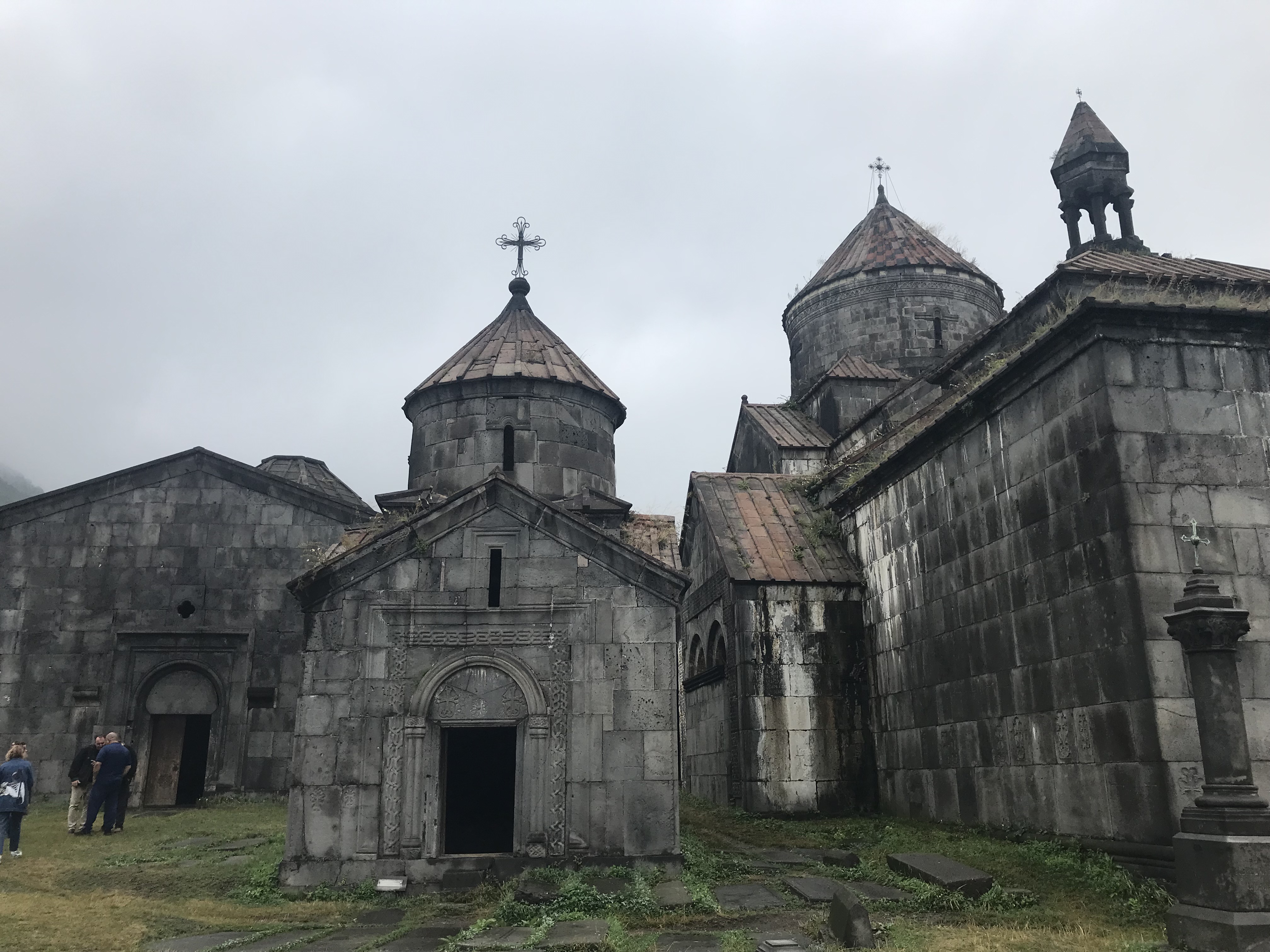
Sanahin’s bell tower, along with Haghpat, are three stories high and held up by columns with intricate designs. I am shown the ornately carved khachkars (cross stones) in varying shades of red and yellow tuff stones and told of its evolution from being simple in design (10th centruty) to turning ornate (13th century). The contrast is intriguing. Particulary fascinating is the 12th-century mausoleum of the Zakarian princes, the patron of the monastery.
From here, we proceed to the nearby museum of Mikoyan Brothers, the two most famous Soviet-Armenians. Artem Mikoyan was one of the designers of MiG aircraft and Anastas Mikoyan was a revolutionist. The brothers were born in Sanahin Village and were hugely famous during Soviet times.
We stop for a cup of soorj (coffee) in a wayside cafe, as the rain clouds gather. Coffee is cheap, strong, unfiltered, easily available and is especially bracing after spending hours of exploring blackened old monasteries in cold weather. I am ready for Haghpat Monastery, another medieval, 10th century monastery complex that served as a spiritual and cultural centre of Armenia alongside Sanahin.
As far as impressions go, the Monastery of Haghpat is top league – the location is unmatched, the architecture is magnificent and the style represents medieval Armenia, particularly in the churches of St Gregor (built in 1025), St Nshan (built by Ashot 3rd in 976-991 in a cruciform type) and St Astvatsatsin (1208-1220). These churches were built at different times and hence the varied architecture. A churchyard, a repository, a bell tower, a refectory, and many khachkars complete Haghpat.
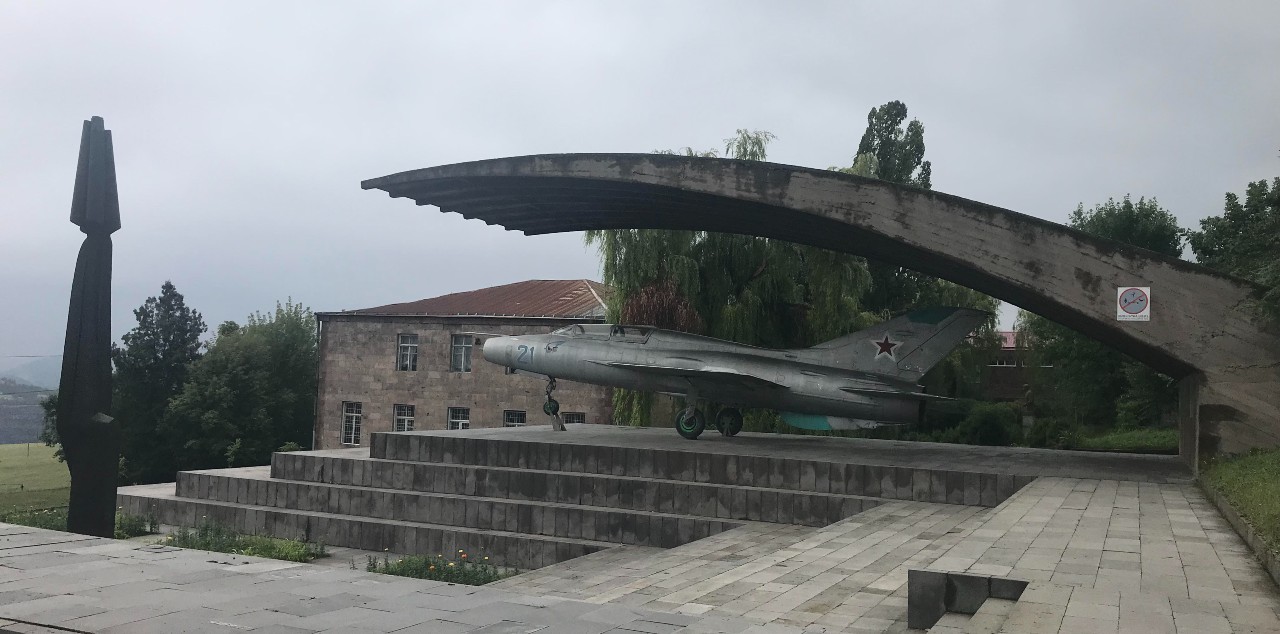
The monastery complex, silhouetted against the mountains and valleys beyond is breathtaking. Like Sanahin, Haghpat also reveled in the fame and glory that came with being a famous library and school where students learnt music, manuscript illumination and philosophy.
I walk around the site studying the khachkars wondering what or who lay beneath when the rains begin – first as a gentle showers then as torrents. We retire into a coffee shop.
The Sanahin Bridge
I am ready for the final attraction of the day, a moment I have been waiting for eagerly. From Haghpat, we drive down to the town of Alaverdi, an important town in the Debed Canyon. Ramshackle roadside khoravat stands is almost the only eating option, but given the season, there is plenty of fresh fruit everywhere. Khorovat is Armenia’s answer to the barbecue and is eaten through the day, often wrapped in fresh lavash bread. Drinking water is free.
Once upon a time, Alaverdi was a mining hub – but now the industries are in ruins. Derelict Soviet-era infrastructure dot the riverbank but it here my heart seeks solace – in an old bridge from the 12th century. The Sanahin Bridge over River Debed. It’s the sort of thing only a pontist or a romantic would dream of visiting. I am both.
We wind our way to this magnificent architectural remain of medieval Armenia. Commissioned by Queen Vaneni, this 60m bridge contains carvings of animals and looks unloved, but to this day, it has not undergone any renovation. It is hard to believe that until the 1980’s there was auto-travel on this bridge.
It is said that years ago, young residents of Alaverdi town jumped from the bridge into the river to show off their spirit and manliness. The tradition continues today, but less frequently and strictly as a matter of fun.
The unseasonal rains have turned the river muddy and violent. With a furiously roar, the river continues its journey into Georgia. I imagine it centuries ago. I suppose nothing has changed, except for a dilapidated chimney of the copper mine watching over it today.

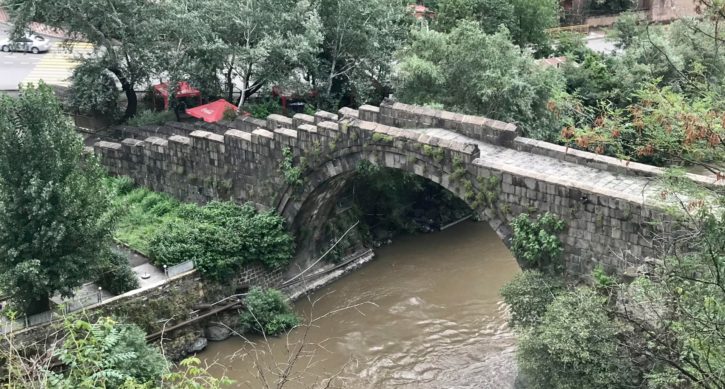
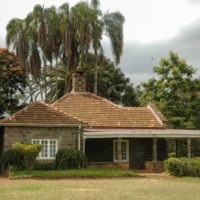

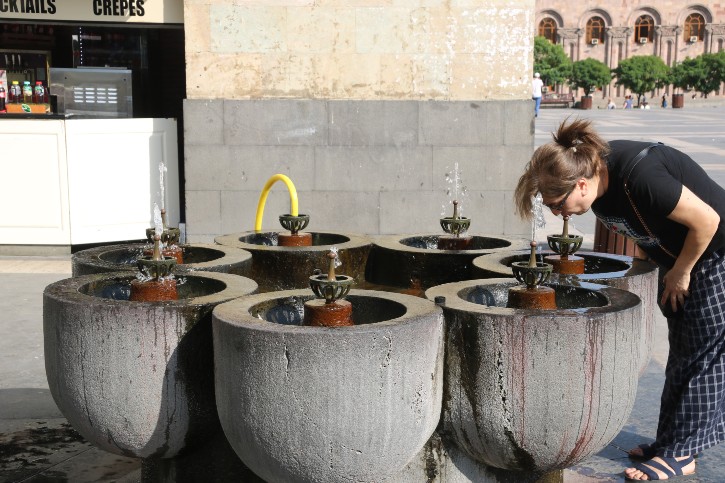
Great blog…Go beyond the norms, break the typical STEREOTYPE mindset that says you need someone to explore the world. TRAVEL SOLO , get on a backpacking trip to the mountains , challenge yourself, you only live once!!